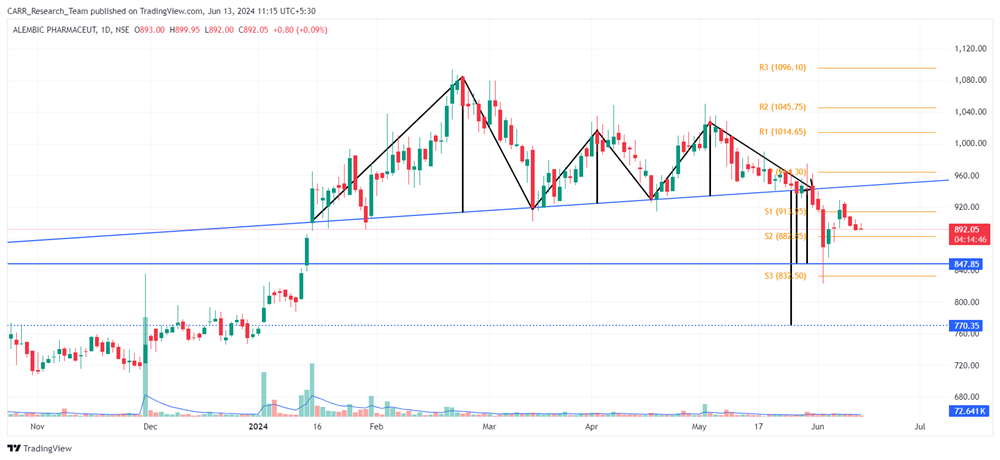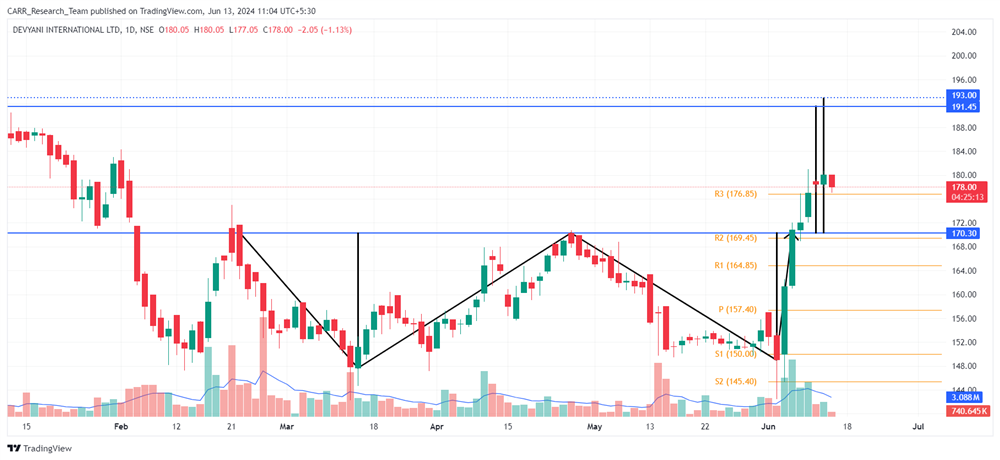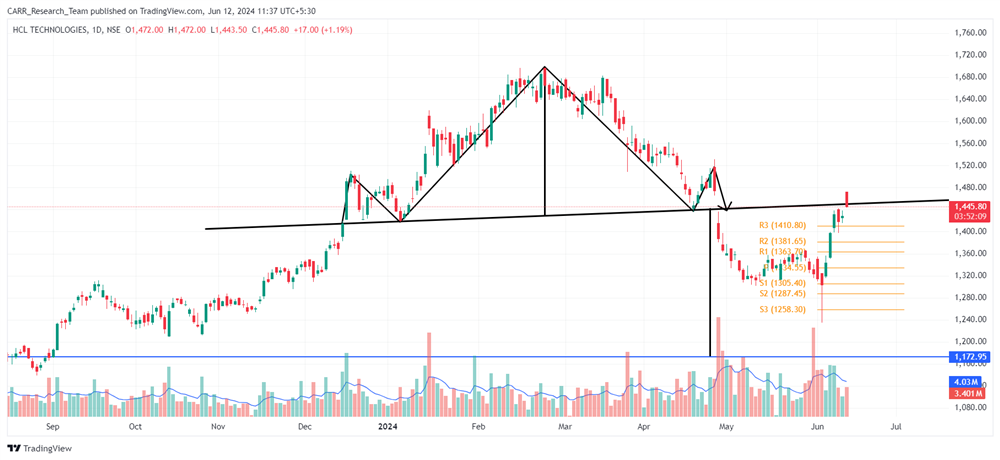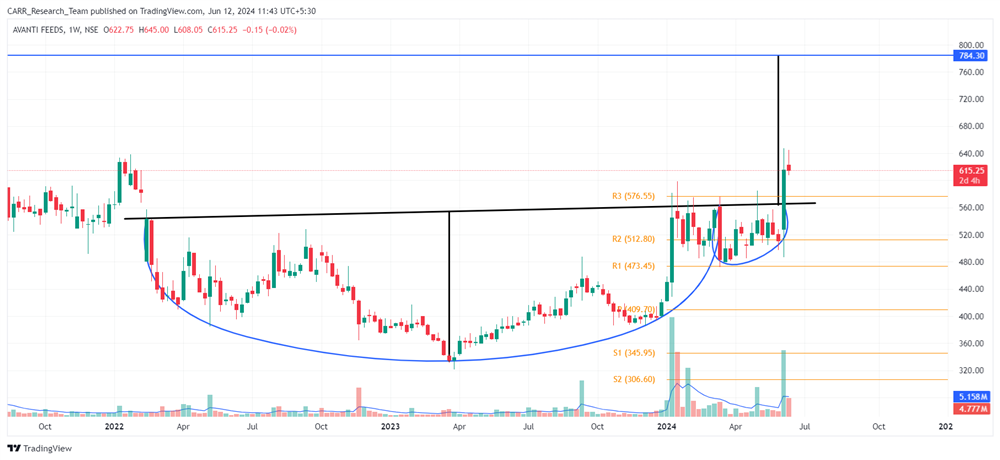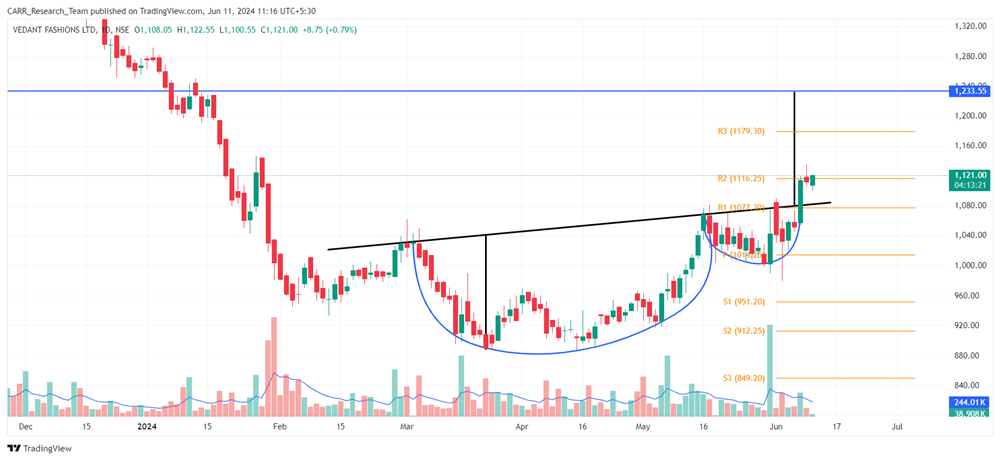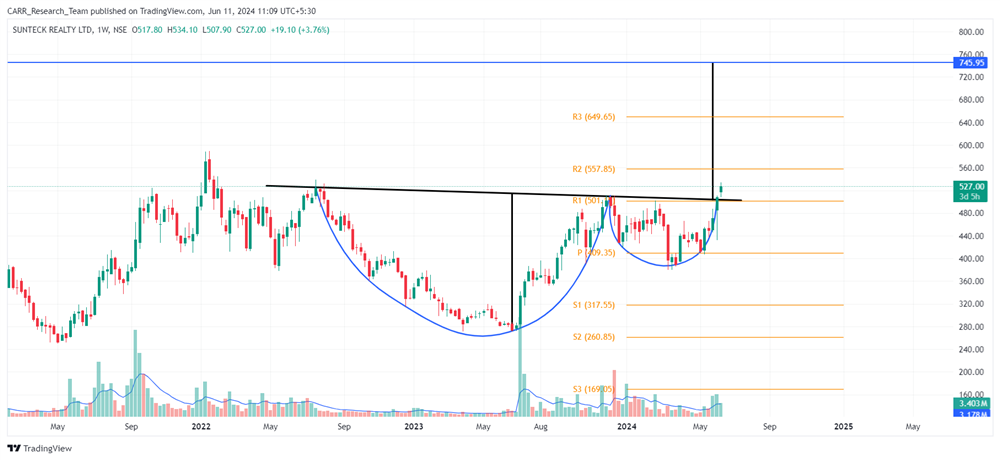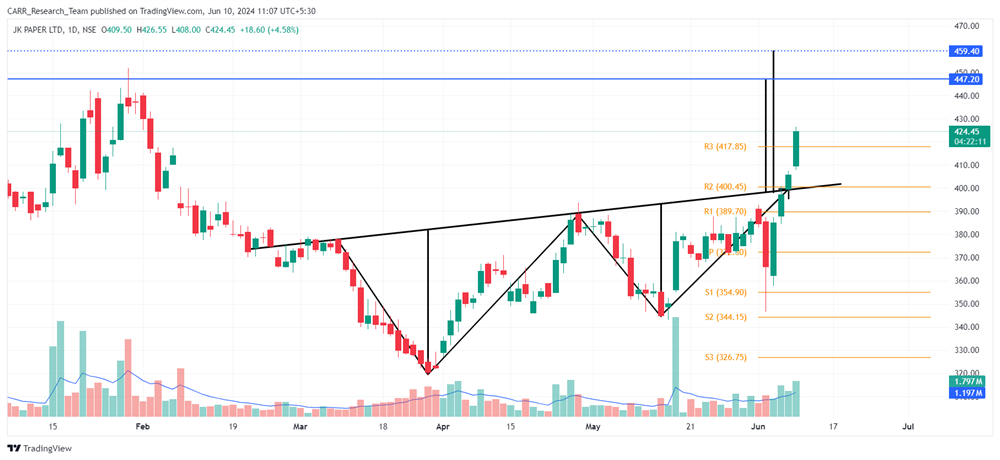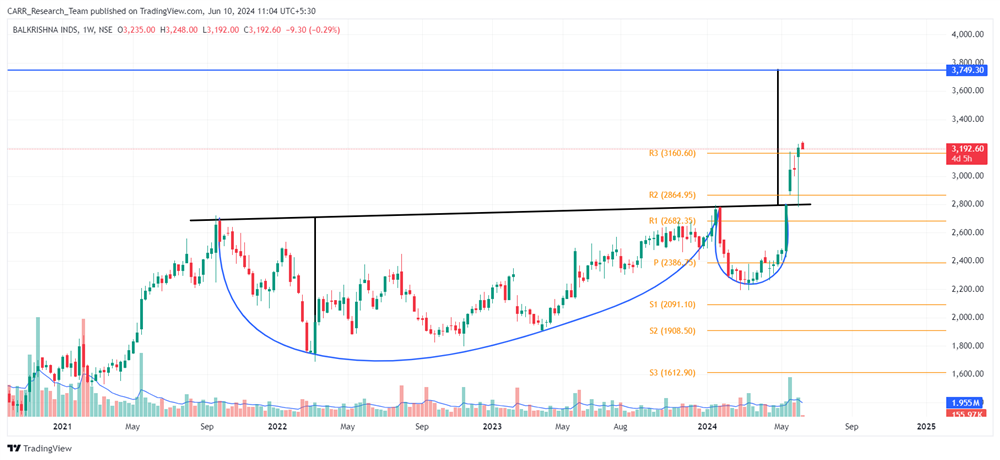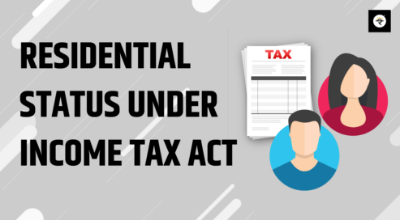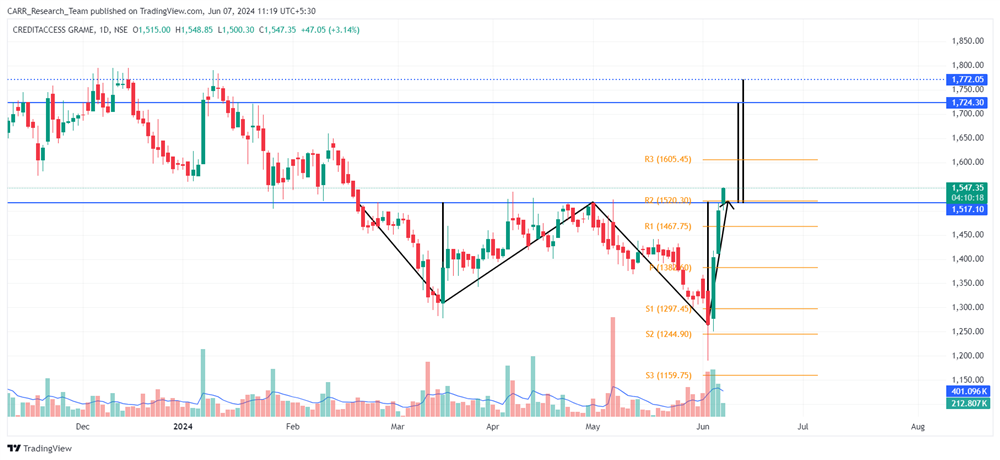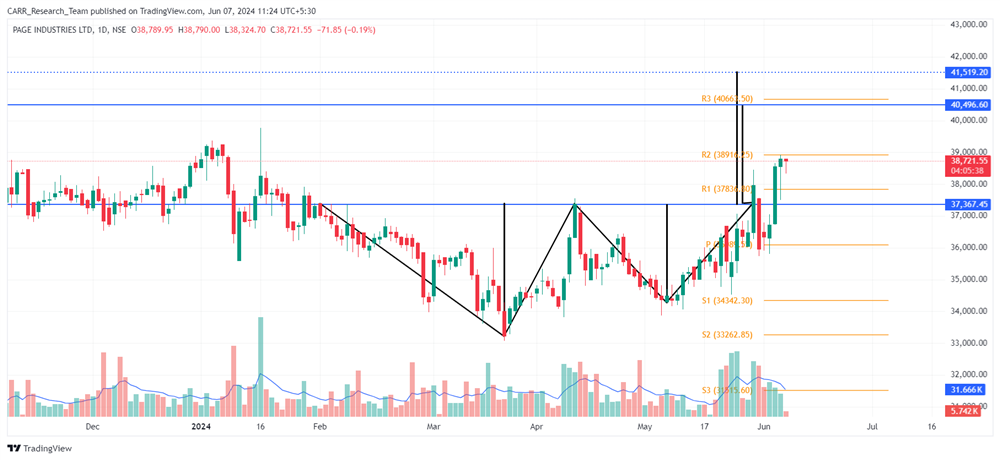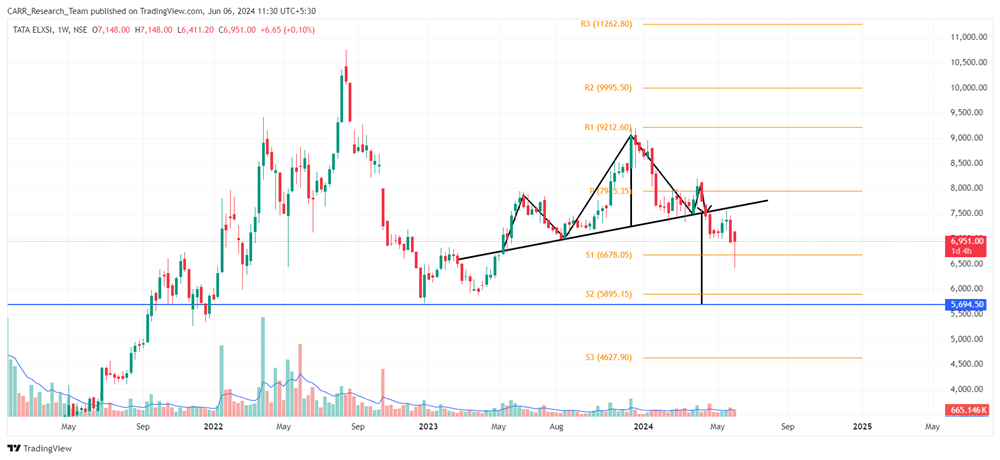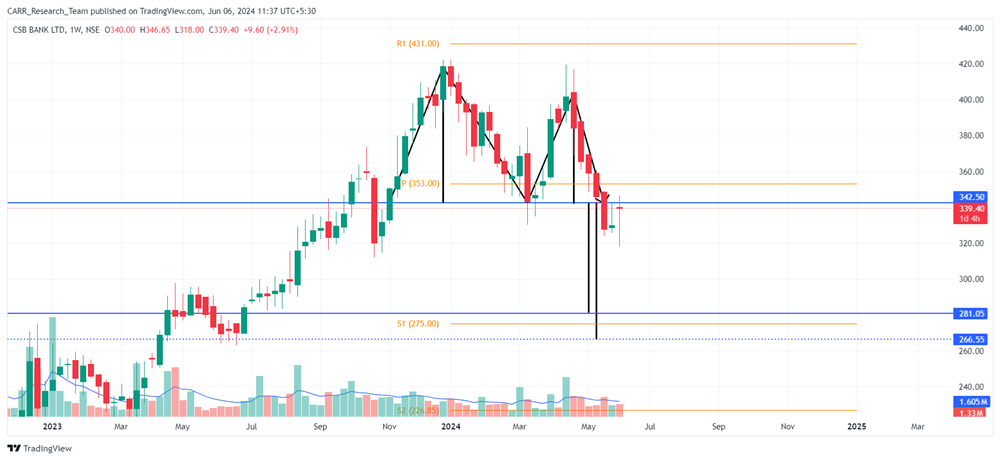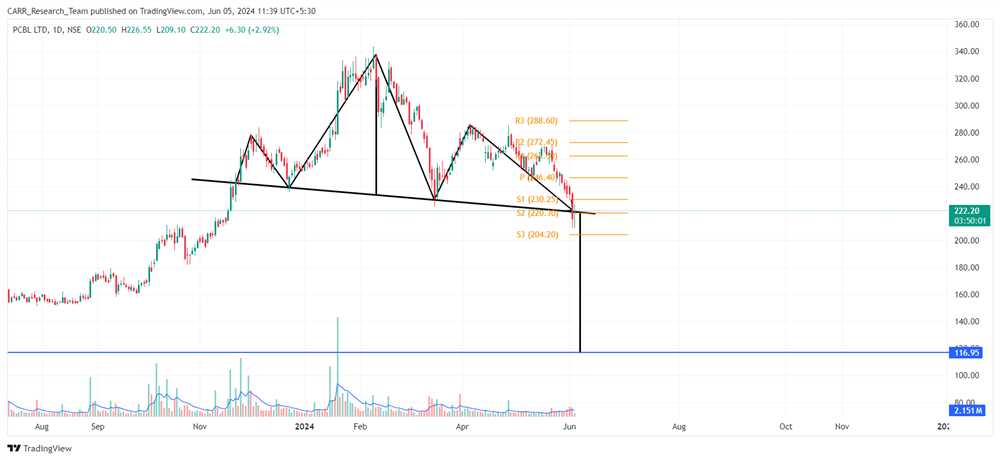Stock name: Endurance Technologies Ltd.
Pattern: Cup and handle pattern
Time frame: Weekly
Observation:
Since its listing, the stock has trended upward. From November 2021 to May 2024, it formed a cup and handle pattern on its weekly chart, breaking out in May 2024. This breakout, supported by above-average trading volume and a bullish MACD indicator, has led to further upward movement. Currently, the RSI is in the overbought zone, suggesting a potential retest. However, as per technical analysis if the stock sustains its momentum, it may continue to rise.
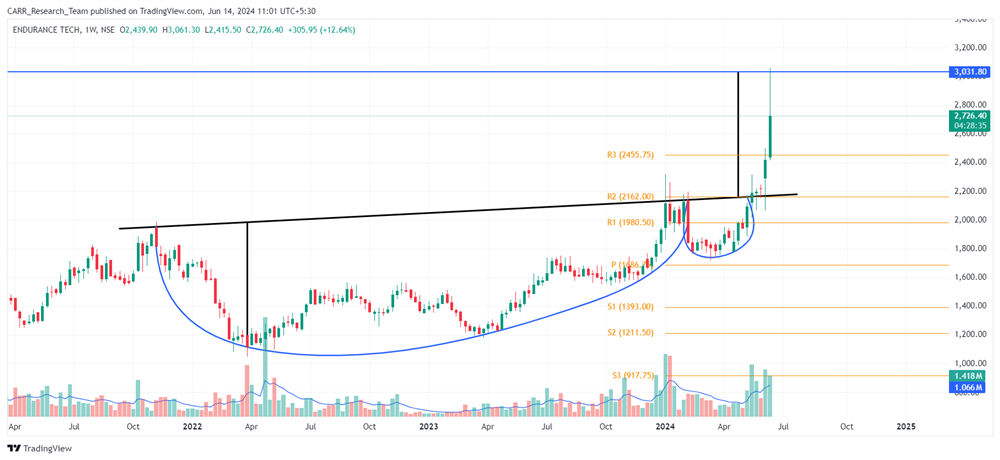
You may add this to your watch list to understand further price action.
Disclaimer: This analysis is purely for educational purpose and does not contain any recommendation. Please consult your financial advisor before taking any financial decision.

Stock name: Glenmark Pharmaceuticals Ltd.
Pattern: Rounding bottom pattern
Time frame: Monthly
Observation:
The stock formed a rounding bottom pattern on its monthly chart from April 2015 to May 2024. It has registered a breakout from the pattern in May 2024. This breakout is backed by average trading volume. Post breakout the stock is moving in an upward direction. Currently, the RSI is in the overbought zone, indicating a possible retest of the breakout level. According to technical analysis, if the stock maintains its momentum, it may continue to rise.
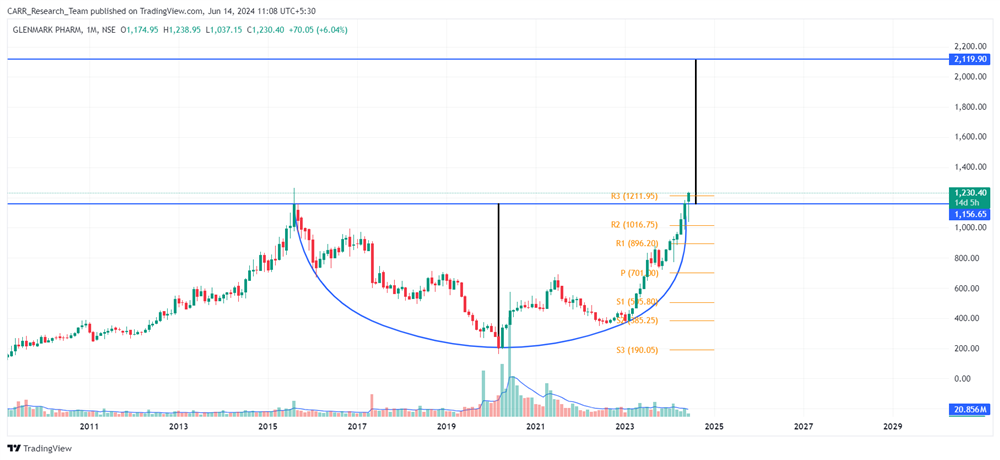
You may add this to your watch list to understand further price action.
Disclaimer: This analysis is purely for educational purpose and does not contain any recommendation. Please consult your financial advisor before taking any financial decision.
News for the day:
- Vedanta has announced a plan to achieve $10 billion in EBITDA through over 50 growth projects, with $8 billion already invested. Key projects include expanding the Lanjigarh alumina refinery and BALCO smelter. The plan expects $4.2 billion from aluminium, $2.7 billion from zinc and silver, and $0.9 billion from oil and gas. Vedanta will also split into five independent companies, to be listed by year-end, leveraging India's projected GDP growth to $7 trillion by 2030. Vedanta shares have surged 75% in three months, outperforming the Sensex.
- Dixon Technologies will invest Rs 1,500-1,800 crore in India over the next three years to expand production and component manufacturing, funded by internal accruals. This year, it will invest over Rs 500 crore and venture into electric vehicle components. Significant funds will go towards mobile phone and display module expansion. Dixon has also partnered with HKC Corporation for manufacturing components and end products. The company reported a 45% revenue increase and a 47% profit rise in 2023-24, aiming for 30-40% annual revenue growth over the next three years.
- Tata Consumer Products Ltd aims to become a full-fledged FMCG company, doubling its capex to Rs 785 crore for FY25, focusing on a new plant in Vietnam. Chairman N Chandrasekaran emphasized expansion through acquisitions, particularly in health-oriented and food products, and significant investments in digital technology and advertising. The company will introduce more millet-based products and explore new FMCG categories. Last year, TCPL spent nearly Rs 7,000 crore on acquisitions. TCPL reported a 10% revenue growth to Rs 15,206 crore in FY24 and plans to continue expanding its product portfolio and digital capabilities.


